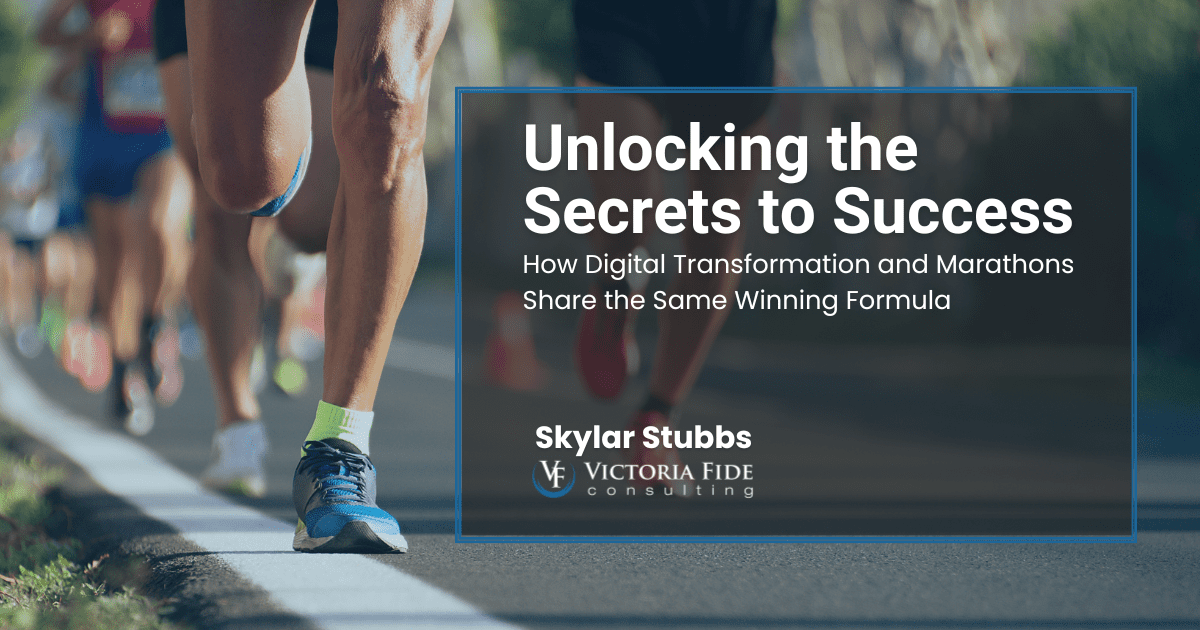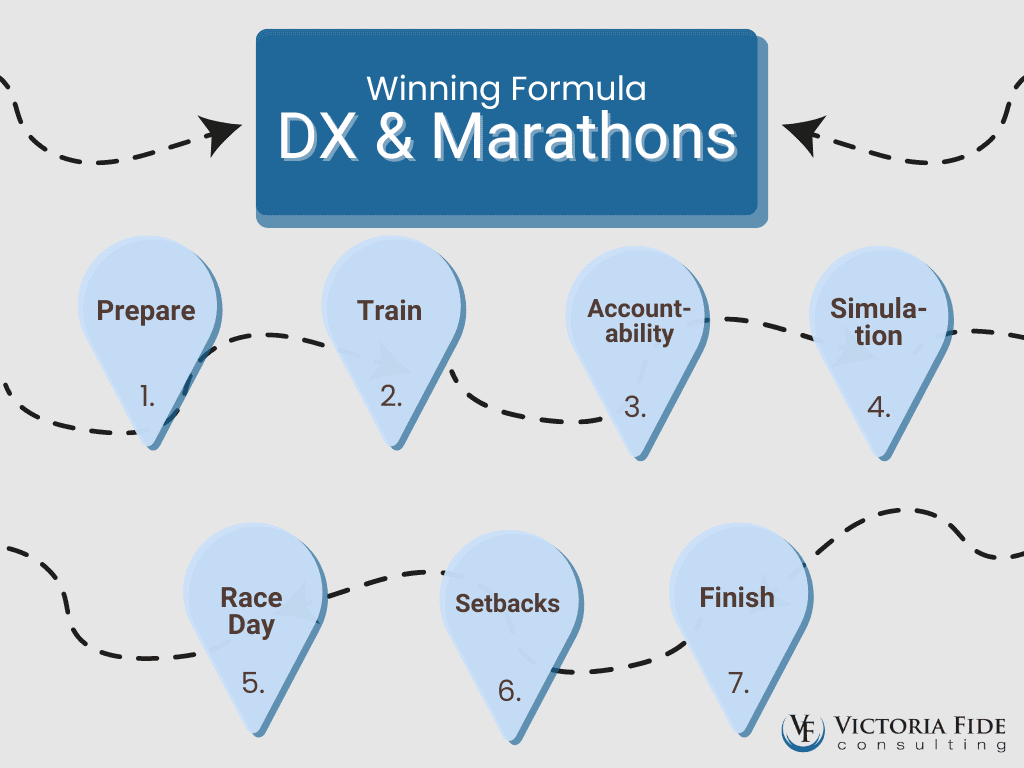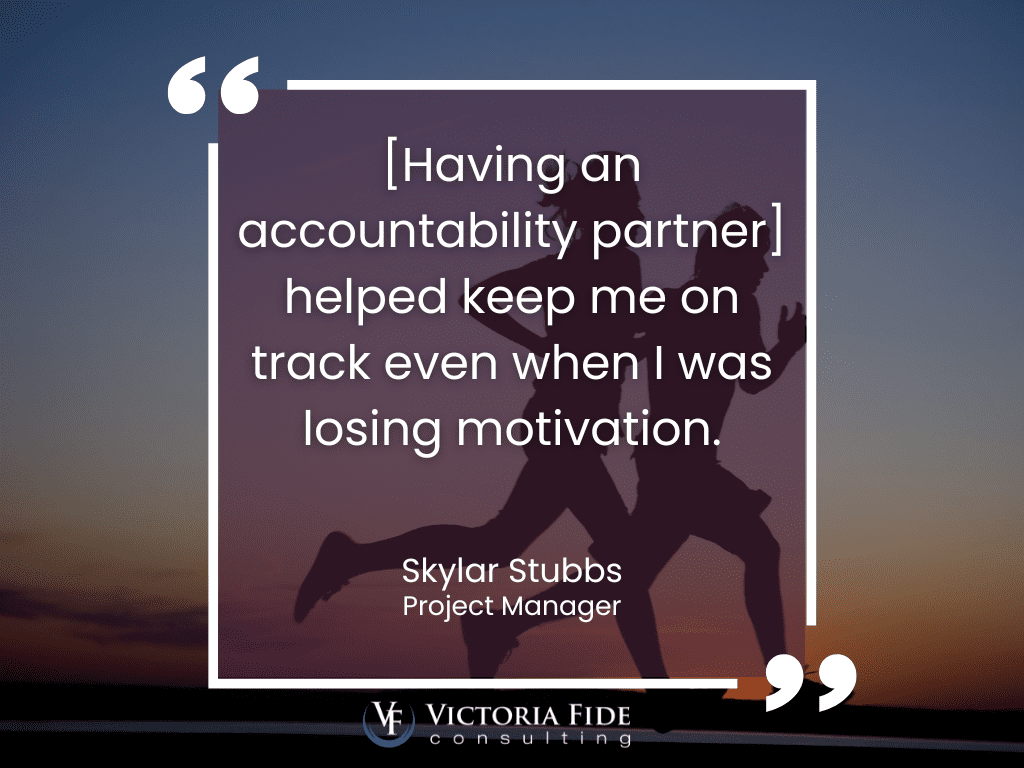
Table of Contents
Marathons and Digital Transformation
I often reflect on my first marathon when I think about trying to accomplish a considerable feat such as an extensive digital transformation (DX). I have always wanted to run a marathon since I was 16 or 17, but still hadn’t nailed down that goal by my mid-20s.
In 2015 I moved to St. George, Utah and started a new job where I made friends with one of my co-workers who is an avid athlete. He had run multiple marathons, and his encouragement finally got me to sign up for my first marathon. I signed up for the St. George Marathon that year. The marathon takes place the first weekend of October, and the signup was in May, so I had 5 months to prepare.

Preparation
I wasn’t a stranger to running and had worked my way up to 16 miles when I was in my teens, but it was time to start fresh, and I had a long road ahead of me (see what I did there?). With the help of my friend, I chose a 16-week training plan that outlined the runs I needed to do each week to be adequately prepared to run a marathon. Even before starting the official training program, there was a certain base number of miles that I needed to be able to run at once without any walking to be prepared to begin the 16-week plan. As the time grew closer to starting the program, I built up my base to be more prepared for training.
Regarding digital transformations, there are many parallels to my marathon experience, one of the most crucial being preparation. When it’s time for a new technology or a change in process, it can be tempting to jump right in without proper planning and preparation. Change is hard and requires preparation and conditioning for it to be successful.
Can you skip the preparation and go right to “race day” and still be successful? Technically, yes, but a lot of that depends on your definition of success. Every marathon includes finishers who did not properly train. Yes, they cross the finish line, but in most cases, it comes at the expense of serious injury and downtime in the coming weeks.
At Victoria Fide, we work alongside you from the early stages of preparation, just like my friend did. First, we help you identify a “training plan” appropriate for your business. We begin with an assessment, discovering exactly where you are today and defining where you want to go. Next, we build a digital transformation plan and enable the change by ensuring all the right people are engaged and aligned. With these pieces in place, we are then ready to kickstart the “training” or transformation.
Training
When the time came to begin my 16-week training plan, I got in the groove of running 4-5 times a week, which usually consisted of 2 short runs, a medium run, and longer runs on Saturday mornings. The overall mileage was short initially but gradually increased week after week as I became stronger, and my endurance increased. During this time, it was easy to lose the motivation to run some days. As a result, I sometimes found reasons to put off doing my training run until the next day. That is where having my friend as an accountability partner made a difference for me.
With your digital transformation preparation done and a plan in place, it’s time to jump in! This is where an iterative approach is taken to assess, design, create, and implement the business solutions. We choose to work in iterations because rarely is everything solved at once. Just like my training, as I worked my way through the plan with the support and encouragement of my friend, Victoria Fide will support you through the digital transformation process ensuring you are adequately equipped to succeed.
Accountability Partner
My friend and I would often text each other screenshots of our runs throughout the week and talk about it at work, which helped keep me on track even when I was losing motivation. Sometimes I received a text from him about his most recent run, which encouraged me to get out and run that night when I would have otherwise skipped a day. Then, of course, I would also do the same for him, which was great to be able to support one another.

As those Saturday morning runs got longer and the summer days got hotter, it required more and more discipline to wake up and get going. We would often do our Saturday runs together since we ran at a similar pace. There were many mornings where the only thing that got me out of bed was simply the commitment I had made to my friend to meet him for the run. I didn’t want to be the one who bailed because I wanted to sleep in.
At Victoria Fide, we are that dedicated friend working right alongside you, acting as an accountability partner. We ensure that the proven process is followed and keep the delivery team accountable and on track, ultimately leading to achieving your goal.
Race Simulation
About 10-12 weeks into the training, we started meeting to do our long Saturday runs on the road where the marathon takes place so we could train on portions of the actual course. The St. George Marathon is well known for having fantastic views (check out Snow Canyon) and for dropping a lot of elevation throughout the race. Initially, that might sound like a good thing, but anyone who has run downhill for an extended period will tell you that, yes, you go fast, but it is brutal on your legs. I needed to be prepared for this running time, incorporate that into my training plan, and be ready for race day.
A vital part of any implementation is simulation testing. Just like I would try to simulate race day scenarios in my training, it’s important to do the same when preparing for a digital transformation implementation. Staging and working through both best-case and worst-case scenarios will ensure you are prepared to take on all your business’s challenges once you go live.
Race Day
Nothing quite gets your nerves going like boarding a bus at 4:30 in the morning and driving up the 26.2 miles of the course you’re about to run. It felt like an eternity of a drive, and I was supposed to turn around and run this?! The atmosphere was electric at the starting line. Over 5000 runners huddled around campfires; music blasted, pumping everyone up.
Finally, the time came for the starting gun, and we were off! The first few miles of the race were surreal as so many other runners surrounded me – I was constantly weaving left and right, finding my way in the crowd. I got a little too excited and ran faster than I should have and had to consciously hold myself back, knowing that I would need to conserve my energy for the remainder of the race. Steadily, as the initial excitement wore off, the runners started falling into their place as the faster runners pulled farther ahead and the slower runners hung back.
When the day for your implementation to Go Live finally approaches, you can confidently take on the challenge because you will be ready. You have put in the necessary work to prepare for the digital transformation and enable your team to execute the changes. You will have laid the foundation necessary to sustain the change for the long term, and you can rest assured that you will soon see a return on your investment.
Setbacks
At around mile 10 or 11, when there was now some serious separation between me and anyone else, I came to a 3-mile stretch of gradual uphill. No longer in a crowd of enthusiastic runners, this hill was kicking my butt both mentally and physically. “Why did I pay money to do this to myself?” “I’m not even halfway through yet!” My training paid off, though, and I pushed through and got a second wind.
Finally, I reached the halfway point and rounded the corner into Snow Canyon State Park. The beautiful views, pockets of cheering spectators, and downhill gradient renewed my motivation.
At about mile 24, only 2 miles from the finish line, I ‘hit the wall.’ Everything in my body was telling me to stop and walk. I wanted nothing more than to lie down on the side of the road and be done. I felt completely spent. But, by this point in the race, spectators are along both sides of the road, giving out water, snacks, and cheering. Somehow, between short bouts of walking, I managed to fight through the pain and keep running until I finally rounded the corner to the finish line.
In the same way, following the process doesn’t mean there won’t be hiccups or unexpected problems that arise. No project goes exactly to plan; project risks and setbacks can arise for many reasons that are often out of your control, including losing key resources, competing priorities for the team, and unrealistic time constraints.
But just like I couldn’t know exactly what setbacks I would face on race day, the foundation I had built through preparation enabled me to work through them and ultimately succeed. By following our Process for Transformational Change, you will be equipped with everything you need to be a finisher regardless of the setbacks you face along the way.
Finishing
Seeing the finish line in the distance was surreal – it gave me one last burst of what little energy I had left. I started to run faster for the final few hundred yards to the finish line. When I finally crossed the finish line, I couldn’t believe it – I had done it! I was so completely exhausted but also euphoric. It was such an amazing feeling. My preparation had paid off!
We want you to be a DX finisher! With our proven process and experts to guide you along the way, we can help you through your digital transformation and make it successful and memorable!
Start Planning Your DX Marathon Today
Ready to transform your business? Contact our digital transformation experts to learn how we can help you successfully navigate the DX marathon, from preparation to Go Live and beyond. Partner with us to save time, money, and achieve your business goals.
About the Author
Skylar Stubbs is Project Manager at Victoria Fide and has been leading projects for over 6 years across multiple industries. Skylar is passionate about utilizing technology to enhance work and facilitate more streamlined processes that benefit everyone across an organization. His favorite part of the client journey is being able to help others find better ways to solve business problems and ultimately make lasting, positive organizational change.
